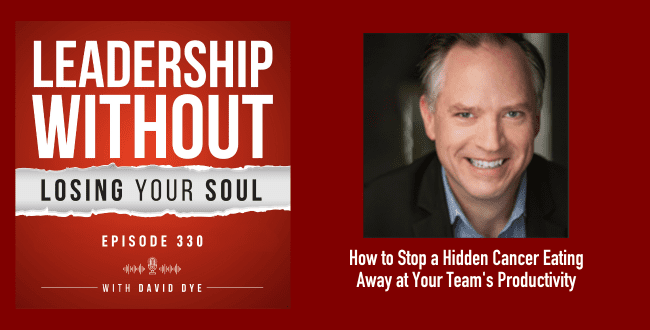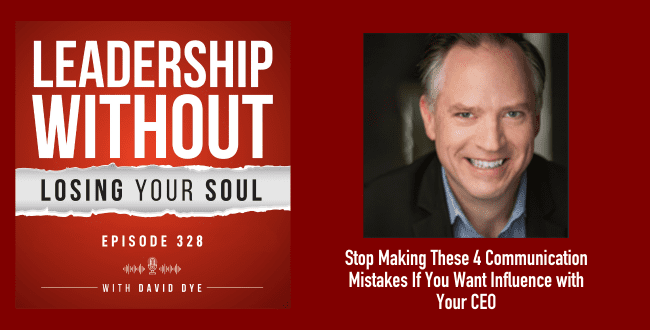The power of getting small, a small habit repeated daily will transform your life, your team, and your outcomes. This principle holds true and it holds true for your leadership and your work. Where can you get small and be the leader you’d want your boss to be?
Getting Small
What weighs just over a hundred million tons? I’ll give you a hint. It floats, it can fuel a daydream, bring joy or bring death, destruction, and despair.
Hey, it’s David, and you’re listening to leadership without losing your soul, your source for practical leadership, inspiration, tools, and strategies you can use to achieve transformational results without sacrificing your humanity or your mind in the process. Welcome to the show today. It’s hard to believe we’re in season 12 of Leadership Without Losing Your Soul already. And talking about a subject that I think is important for every one of us from a perspective of helping us to navigate day-to-day and get things done and not underestimate the power of the small things. So today’s episode is called Getting Small, and it’s based on another selection from Tomorrow Together: Essays of Hope, Healing, and Humanity.
So what weighs, on average, just over a hundred million tons and floats, can cause daydreams, joy, death, or destruction. I’ll tell you the answer, but for now, let’s go back to 1845. In 1845, you couldn’t find a single suspension bridge used for trains anywhere in the world. In fact, US engineers dismissed suspension bridges as unsafe in general, much less for a railroad. By 1855, however, the world’s first functional railway suspension bridge had been built spanning the Niagara River and allowing train travel between the US and Canada. And the history of this bridge is fascinating.
It started with a picnic and a letter. There was a Canadian entrepreneur named William Merritt who was enjoying a picnic with his wife on the banks of the Niagara River, and they’d received a letter from their children who were visiting Europe. In the letter, the children described an amazing suspension bridge they’d seen in Switzerland. That letter sparked a vision in merit to see a similar bridge across the Niagara River, but one that was capable of rail travel to connect Canadian trade with the rapidly expanding US rail network and the American West. So he did what visionary entrepreneurs do, got permission from the government, formed a company, and looked for someone with the technical know-how to make it happen, and that someone was an engineer named Charles Elliot Jr. In addition to his engineering skills, Elliot had a flare for the dramatic. He was quite the self-promoter and his ability for self-promotion helped him win the contract.
In 1848, he got started in typical Elliot fashion with a contest. The first problem that Elliot and his team confronted was how to suspend a line across the gap. The canyon, the narrowest point of the gorge was still 800 feet across and 230 feet deep. So the team considered tying a line to a cannonball or a rocket and firing those across the gorge. But finally, they settled on a different strategy after getting small. It was a strategy that Leonardo da Vinci had suggested 400 years earlier, use a kite. And for Elliot, this was an opportunity to promote the project, and I imagine to prevent newspaper stories of grown men flying kites while they’re supposed to be building a bridge. He publicized the event and held a competition with a prize of $5 to the boy who first flew a kite across the Niagara Gorge.
There were quite a few boys from towns on the US side of the river who tried and failed. But one boy, Homan Walsh took a ferry across the river to the Canadian side of the gorge, returned downriver to the gorge, and flew his kite. From there, he succeeded on his second attempt and tied his kite string to a tree, and then tied a thicker string to the kite string and pulled it across the gorge. He and his team repeated that operation, tying thicker ropes, pulling them across the gorge until finally they could pull a cable across and the bridge was underway. It would ultimately require seven more years and a different engineer to finish the work. But I think a lot about that bridge strong enough to carry loaded trains that started with a picnic, a letter, and a kite string, and whenever I’m starting a project that feels overwhelming, I look for the kite string. What’s the smallest activity I can do to get started?
Towers will need to be built and thick tab cables secured, but it starts with that string. Small is powerful. A kite string almost feels like it’s beneath notice, but that rail bridge was the first of its kind a snowflake. Inconsequential, but an avalanche is unstoppable. So back to our opening question. What weighs more than a hundred tons, floats, and causes both daydreams and ruin? The answer is a cloud. Despite their weight, they’re slightly less dense than the surrounding air so that hundred-ton cloud can float and hang in the air. Vince van Gogh said, great things are not done by impulse, but by a series of small things brought together, and he probably wasn’t thinking about clouds or avalanches or rail bridges. But the principle holds true and it holds true for your leadership and your work. The power of getting small, a small habit repeated daily will transform your life, your team, and your outcomes.
A small act of defiance against injustice replicated across people can change a nation a little bit. Saved every day becomes a fortune over time. But it can be hard to show up every day and write or run or eat well or be kind or stand up for what’s right or be consistent with your team. And there are days I don’t feel like doing any of those things. And the challenge, of course, is what does one day matter? What if I don’t run today? What if I don’t write? What if I’m not intentional with my team? And one day might not be a problem. Resting may even be a benefit if, if it helps you recharge, refresh clear the cache, but it’s also easy for one day skipped to turn into two, and soon a habit of absence exists and the habit of activity has to be rebuilt.
It’s easier to take a small step if you’ve taken that same small step before inertia matters. I know that we can struggle to see the effects of one small act, one run, one 10-minute writing exercise, one word spoken in kindness, that one moment of extra investment in your team of accountability or of clarifying expectations. A phone call to a friend or a loved one or another voice raised the effect of that one moment or action in isolation might not be much at all. But remember that small action isn’t isolated. You can’t pull the middle thread out of a towel without ruining the whole thing. And it’s the same way with relationships, health, and leadership, a series of small incremental moments that connect and build upon one another to create greatness. So where can you get small and be the leader you’d want your boss to be?









0 Comments